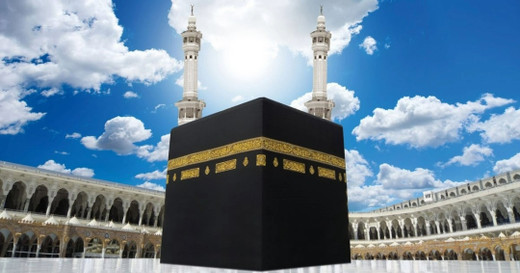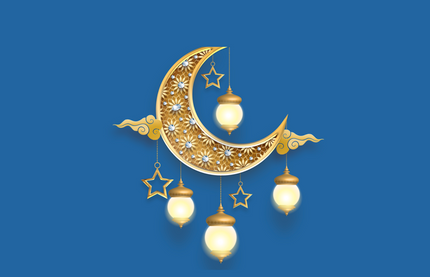How to perform umrah?
Umrah
Umrah is a voluntary act of worship that can be done at any time of the year by any capable Muslim, for as long as the person likes. In this article, we will learn the rituals of umrah and how to perform them if a woman can perform Umrah without a mahram, and more, let’s get started.
What is the umrah?
Umrah is known as the lesser pilgrimage, it’s a voluntary act of worship in which Muslims go to Ka’aba to worship Allah. Umrah can be done at any time of the year, but you should know that there are two types of Umrah.
- Umrah al-Mufradah which is performed at any time of the year except the days of Hajj.
- Umrah al-Tamattu this type is only performed in conjunction with Hajj.
What makes umrah one of the most beloved acts of worship is that it erases all sins. Anyone can perform Umrah as long as the following conditions apply:
- To be a Muslim.
- For the person to be mature.
- Capable Financially and Physically.
How long is umrah?
The duration of Umrah differs based on the Umrah Package you choose. There are different packages to choose from with different durations and prices to suit everyone. The minimum package is seven days and the maximum is 30 days.
How do you perform Umrah step by step?
Here are the steps to perform Umrah for women and men.
How to perform umrah for women?
Here’s how you can perform Umrah in easy steps:
The state of Ihram
- Clip your nails and remove any unwanted hair.
- Take a bath (Ghusl) or perform Wudu.
- Wear the Ihram clothing before the departure of your flight.
- After wearing the Ihram clothing Pray salat Ihram. By praying two Rakat and reciting surah al-Kafirun in the first Rakah and surah Ikhlas in the second. Then Make a dua after finishing the prayer.
- When you are near the Miqat make your intention to perform Umrah. And recite the Talbiyah as follows:
لَبَّيْكَ اللهُمَّ لَبَّيْكَ – لَبَّيْكَ لَا شَرِيْكَ لَكَ لَبَّيْكَ – إِنَّ الْحَمْدَ وَالنِّعْمَةَ لَكَ وَالْمُلْكَ – لَا شَرِيْكَ لَكَ – Labbayka llāhumma labbayk(a), labbayka lā sharīka laka labbayk(a), inna l-ḥamda wa n-ni’mata, laka wa l-mulk(a), lā sharīka lak. English translation: At Your service, Allah, at Your service. At Your service, You have no partner, at Your service. Truly all praise, favor, and sovereignty are Yours. You have no partner.
- Send Salawat (peace and blessings) to the prophet.
- When entering Makkah keep reciting Talbiyah, Dhikr, and Salawat on the Prophet.
Entering Masjid al-Haram.
- Enter Masjid al-Haram with your right foot and recite the entering the mosque Dua.
- Head to the Kaaba and when you see it recite “Allah Akbar, Allah Akbar, LA illah ila Allah” three times. Then make Dua and Salawat.
- Start the Tawf: go to the Hajar al-Aswad. If you can’t see it there will be a green light on the wall to mark its position.
- Make you intention by reciting:
اللَّهُمَّ إِنِّيْ أُرِيْدُ طَوَافَ بَيْتِكَ الْحَرَامِ فَيَسِّرْهُ لِيْ وَتَقَبَّلْهُ مِنِّيْ Allāhumma innī urīdu l-ṭawwafa baytika l-ḥarāmi fa yassirhu lī wa taqabbalhu minnī. O Allah, I intend to perform Tawaf of the Sacred Mosque, so accept it from me and make it easy for me.
- Perform the Istilam: Touch or kiss the Hajar al-Aswad if you can reach it. If you cant then raise your hand to your ears and recite:
Bismillahi Allauhu akbar wa lillahil hamd. Translation: I begin with the name of Allah, Allah is the Greatest, and all Praise be to Allah.
- Circle around the Kaaba anticlockwise while reciting Duas, Dhikr, Salwat, or Quran.
- When you are between the Rukn al-Yamani and the Hajar al-Aswad recite:
رَبَّنَا آتِنَا فِي الدُّنْيَا حَسَنَةً وَفِي الْآخِرَةِ حَسَنَةً وَقِنَا عَذَابَ النَّارِ Raubanaa aatinaa fiddunya hasanah wa fil akhirauti hasanah wa qinaa a’zab annaar. O our Lord, grant us the good of this world, the good of the Hereafter, and save us from the punishment of the fire.
- When you reach the Hajar al-Aswad you’ve completed one circle. Do the second by performing Istilam.
- Repeat this process seven times.
- When you finish the Tawaf pray two Rakat whether in the Masjid or in a place where Maqam Ibrahim is between the KAbaa and you. Recite surah al-Kafirun in the first Rakah and surah Ikhlas in the second. Then Make a dua after finishing the prayer.
- Drink the water of Zamzam and make Dua.
- Face the Kaaba and make Dua, but it’s better to go between the door of the Kaaba and Hajar al-Aswad. Touch the door and make Dua, if you can reach it.
- Perform final Istilam.
Sa’i of Safa and Marwa
- Go to the hill of Safa and Marwa and make your intention.
- Face the Kaaba and say “Allah Akbar”, “La Ila Illa Allah”, send Salawat upon the prophet, and Make Dua, make as much Dua as you can.
- Head to Marwa.
- When walking between Safa and Marwa make Dua, Dhikr, read Quran and send Salawat.
- When you reach Marwa hill do as you did at Safa. say “Allah Akbar”, “La Ila Illa Allah”, send Salawat upon the prophet, and Make Dua.
- You will go back and forth between the Safa and Marwah, seven times (you will finish at Marwa).
- Make Dua after you finish and then pray two Rakat in the Mosque.
Halq or Taqsir.
When exiting the Masjid exit with your left foot and recite the leaving the masjid Dua. The last step to finish the Umrah is for men to shave or at least cut an inch of their hair and women to trim their hair.
How to perform umrah for men?
Whether men or women both perform the same rituals of umrah, the only difference is that women trim an inch of their hair. While men should perform Halq or at least trim an inch of their hair.
Can you do umrah on your period?
Some of the umrah rites can be performed during menstruation while others can’t be performed until it ends. This means that in order to complete Umrah a woman should wait until the menstrual bleeding stops and she takes a ghusl. Here’s what you can and can’t do:
- Ihram:
- You can perform any acts to prepare yourself for Ihram.
- Take a bath before entering Ihram, which is a sunnah.
- Make your intention and recite talbiya as much as you like.
- Recite duas and supplications.
But you can’t pay the two Rakat before entering the Ihram and you don’t need to pray it later to make up for it.
- Tawaf:
You can’t perform Tawaf while menstruating, you have to wait until it stops and take a ghusl, then perform Tawaf. And you can’t enter the mosque
- Sa’i:
You can’t perform the sa’i while menstruating, you have to wait until it stops then take a ghusl and perform sa’i. but in the case, that the period started before performing Tawaf. If it started after performing tawaf then you can perform Sa’I but can’t enter the mosque.
- Trimming the Hair:
You can’t trim your hair until you complete the umrah rites.
Here’s what scholars say about the topic: If a menstruating woman passes the meqat with the intention of doing Hajj or ‘Umrah, she is obliged to enter the ihram from the meqat. It is not permissible for her to delay entering the ihram until she reaches Makkah and becomes pure [i.e., her period ends]. The Sunnah and scholarly consensus indicate that menstruation does not prevent one from entering ihram, so a woman may enter ihram even if she is menstruating, but then she should not do ‘umrah until she becomes pure and does ghusl. Muslim narrated from Jaabir ibn ‘Abd-Allah (may Allah be pleased with him) that when Asma’ bint ‘Umays gave birth at Dhu’l-Hulayfah, the Messenger of Allah (peace and blessings of Allah be upon him) instructed Abu Bakr (may Allah be pleased with him) to tell her to do ghusl and enter ihram. Al-Nawawi said: “This indicates that the ihram of women who are bleeding following childbirth or who are menstruating is valid and that it is mustahabb for them to do ghusl when entering ihram.” Al-Bukhaari and Muslim narrated that ‘Aa’ishah (may Allah be pleased with her), the wife of the Prophet (peace and blessings be upon him), said: “We went out with the Prophet (peace and blessings of Allah be upon him) on the Farewell Pilgrimage. I came to Makkah when I was menstruating and I did not circumambulate the House or do sa’i between al-Safa and al-Marwah. I complained about that to the Prophet (peace and blessings of Allah be upon him) and he said: “Undo your braids and comb your hair (i.e., do ghusl) and enter ihram for Hajj…” Al-Nawawi said: “This indicates that menstruating women, women who are bleeding following childbirth, those who have broken their wudoo’ and those who are junub may do all the actions and say all the words of Hajj except tawaf and the two rak’ahs to be prayed afterward. Their standing in ‘Arafaah is valid, as are other actions of Hajj. The ghusl that is prescribed for Hajj is prescribed for menstruating women. This indicates that tawaf on the part of a menstruating woman is not valid. There is scholarly consensus on this point.” It was narrated from Ibn ‘Abbaas that the Prophet (peace and blessings of Allah be upon him) said: “When menstruating women and women who are bleeding following childbirth come to the meqaat, they should do ghusl and enter ihram and do all the rituals apart from Tawaf around the Ka’bah.” Shaykh al-Islam Ibn Taymiyah said: “The Prophet (peace and blessings of Allah be upon him) commanded menstruating women and women who were bleeding following childbirth to enter ihram and recite the Talbiyah etc and to attend ‘Arafah and recite dhikr and dua and to stone the Jamaraat remembering Allah, and so on. He did not regard it as makrooh for them to do that, rather that is obligatory for them.” Shaykh Ibn Baaz said: ”When a menstruating woman or a woman who is bleeding following childbirth reaches the meqaat, it is obligatory for her to enter ihram, if that is for an obligatory Hajj or ‘umrah. If it is a voluntary pilgrimage and she has already performed the Hajj and ‘umrah that is required in Islam, then it is prescribed for her to enter ihram from the meqaat just like other women who are pure (i.e., not menstruating or bleeding following childbirth).” Shaykh Ibn ‘Uthaymeen said: “A woman whose period begins before she enters ihram can enter iham while menstruating because the Prophet (peace and blessings be upon him) commanded Asma’ bint ‘Umays, the wife of Abu Bakr (may Allah be pleased with them both), who gave birth at Dhu’l-Hulayfah, to do ghusl and tie a cloth around herself, and enter ihram. The same applies to menstruating women, and they should remain in ihram until they become pure (i.e., until their period or nifaas ends and they do ghusl), then they should do tawaf around the Ka’bah and sa’i.”
Can you go to umrah without a mahram?
Yes, nowadays women can go to umrah without a mahram, unlike in the past when women were forced to take a mahram with them to perform Umrah. You can read an umrah book to learn more about the virtue and rites of umrah. Here are some books that you could read or read to your children to teach them about hajj and umrah:
This book is written by Mufti Ikram Ul Haq to guide us on how to perform hajj or umrah correctly in steps. This book will provide you with practical and detailed guidance about the rituals of Hajj and Umrah. If you want to learn about the fifth pillar of Islam as well as how it is performed. This book is great for you if you’re planning to go to umrah or hajj.
This book contains four pages on the virtues of Hajj and Umrah, one page on the benefits of making dua for others, and 110 blank pages for you to write about your journey. What are the benefits of this journal? This book is a free space for you to write down what you want about your journey to Hajj, about your experience in Hajj, then it becomes a beautiful memory that you keep for yourself so that you read it whenever you are overwhelmed by nostalgia and longing for Hajj.
This book contains four pages on the virtues of Hajj and Umrah, one page on the benefits of making dua for others, and 110 blank pages for you to write about your journey. What are the benefits of this journal? This book is a free space for you to write down what you want about your journey to Hajj, about your experience in Hajj, then it becomes a beautiful memory that you keep for yourself so that you read it whenever you are overwhelmed by nostalgia and longing for Hajj.
A Little Tree Goes for Hajj, written and illustrated by Eman Salem, is an ideal educational book to introduce the Hajj to your child who is learning about the important rituals of Islam. In this book, there is a story about a Little Tree who always wishes to travel to Mecca in order to perform Hajj. But the problem is that the roots of the Little Tree are in the ground. Find out, in spite of that problem, how the Little Tree has been able to fulfill his dream and make the journey of a lifetime.
We’re Off to Make ‘Umrah, written by Sana Munshey, is a storybook of a brother and a sister who travel with their parents to the city of Mecca in order to perform Umrah for the very first time. Children, reading this book, can discover the joys of Umrah which is a sacred ritual of Muslims.
















